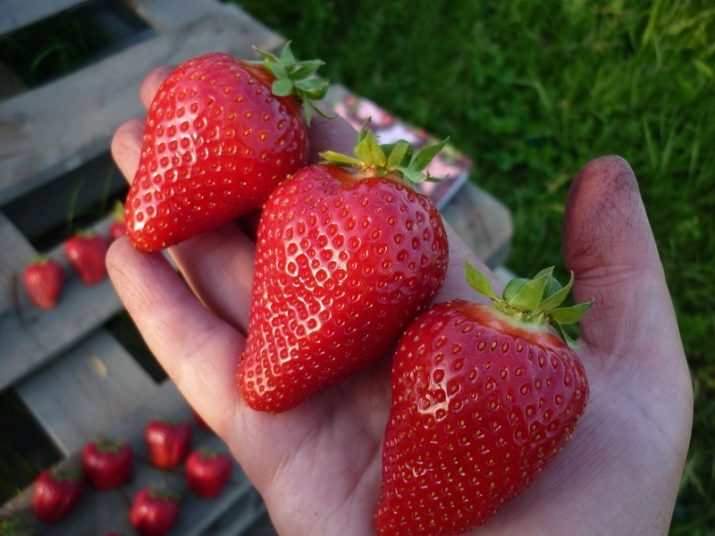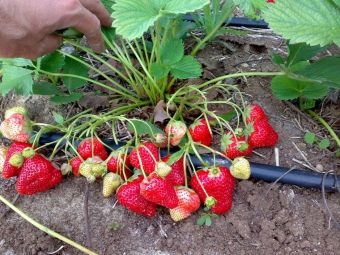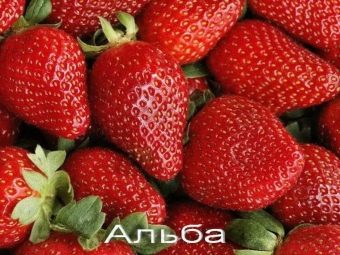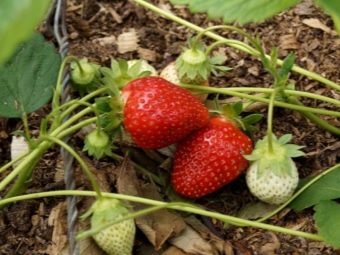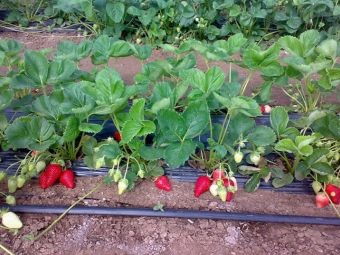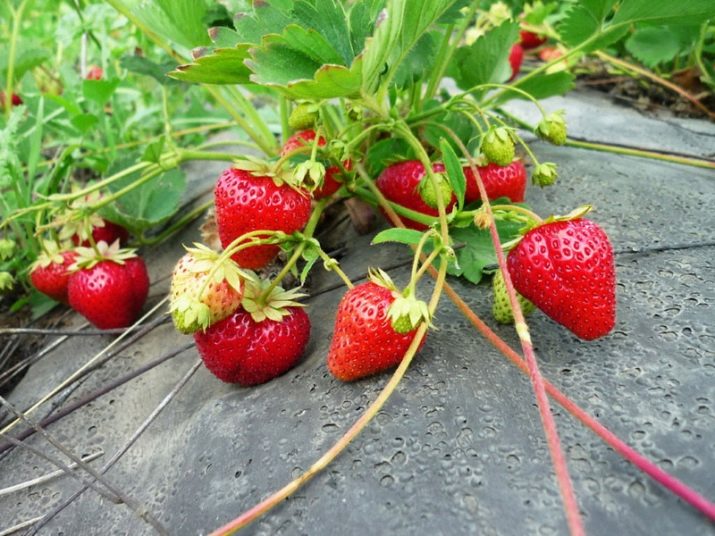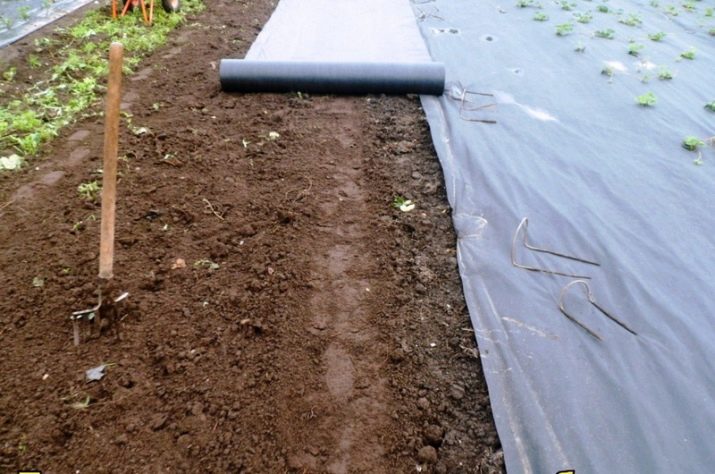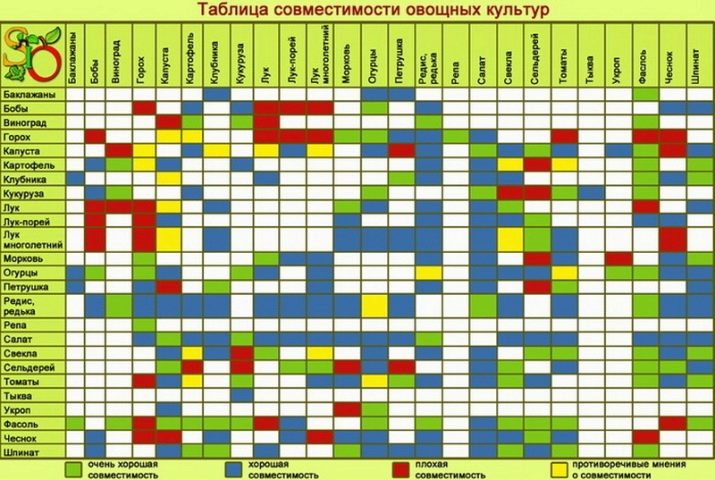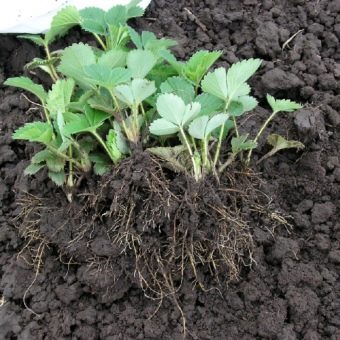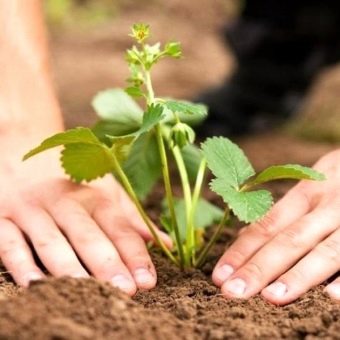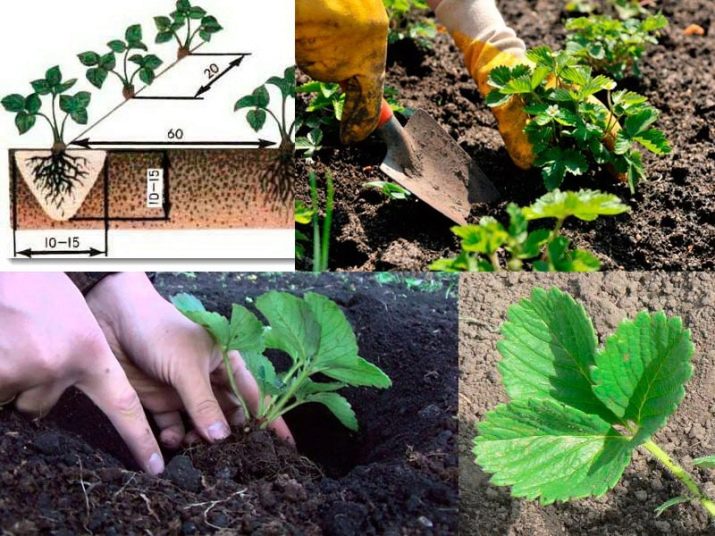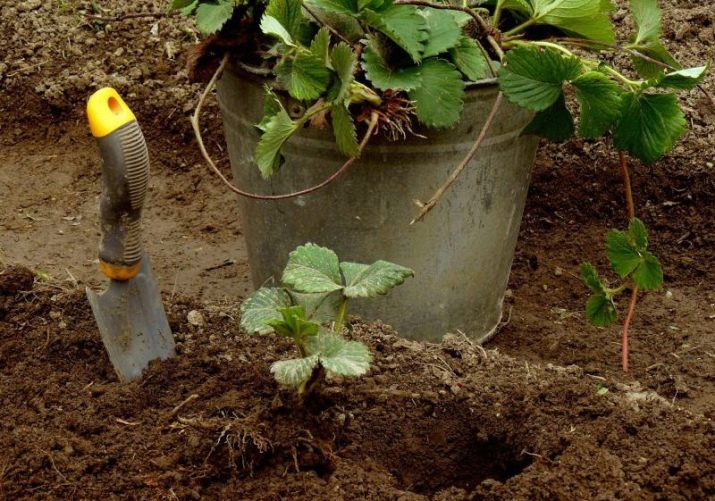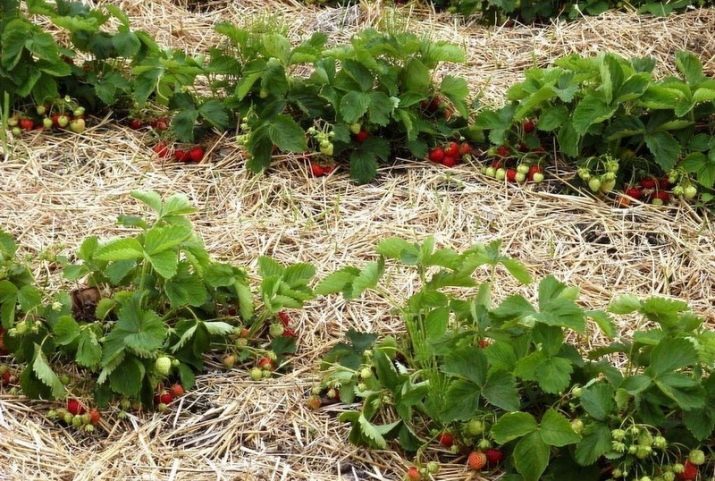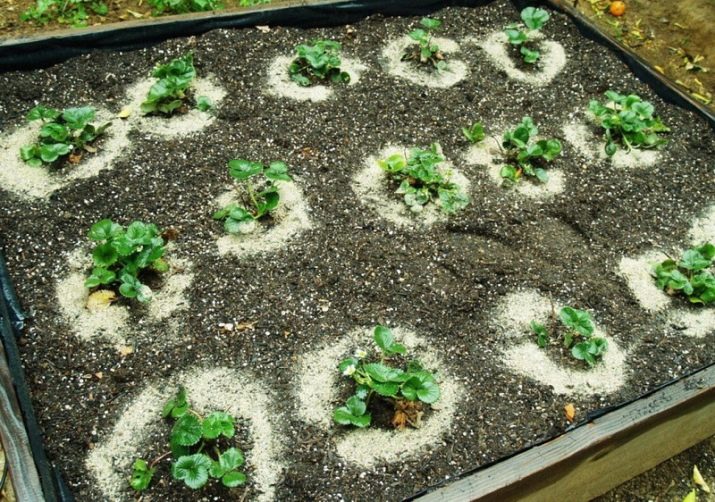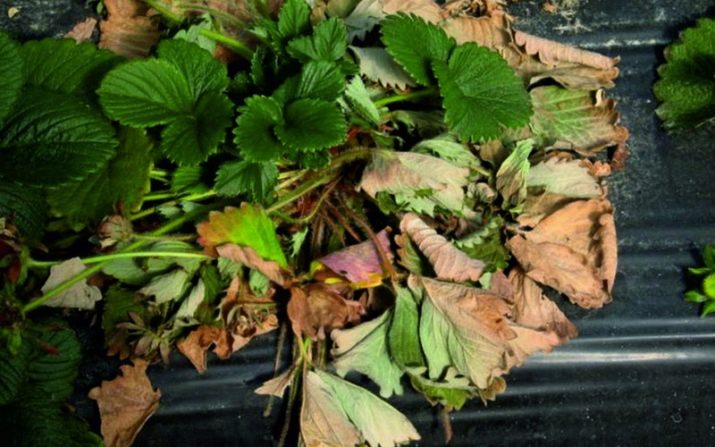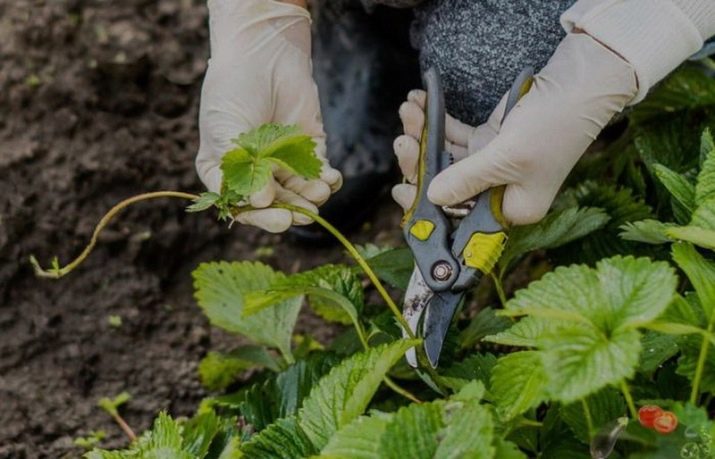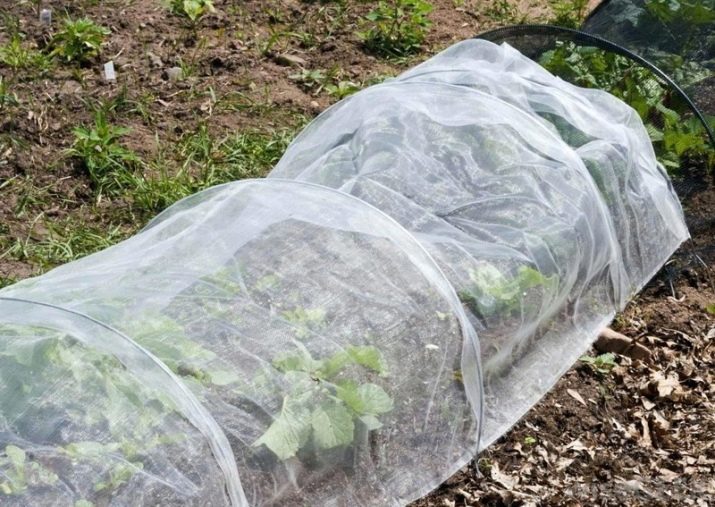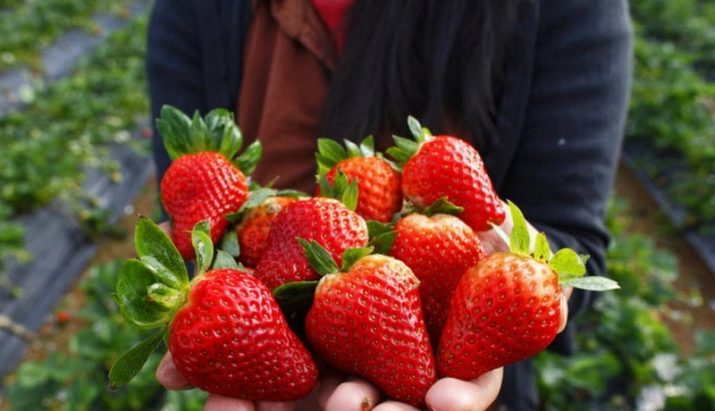Alba Strawberry: variety description and cultivation features
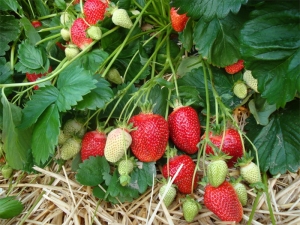
Strawberry is a favorite berry, so it is often found in the dacha plots.The modern market offers a wide variety of varieties with excellent characteristics. But despite the wonderful taste of the berries of many varieties, often their transportability leaves much to be desired. When transported to other cities or countries, the strawberry rots quickly and loses its presentation. Therefore, among amateur gardeners and those who cultivate such crops professionally, varieties that can not spoil for quite a long time are popular. These include the variety "Alba", which will be discussed in this article.
Origin of species
This variety comes from Italy. In 2003, the garden company New Fruits, which is the breeder of many varieties popular in Russia, brought it. Due to the amazing taste and excellent transportability, Alba quickly gained great popularity in the CIS countries. In 2005, this variety of strawberries became the sales leader.
Specifications
Description of the variety should begin with the fact that "Albu" can be grown in open beds, and in the greenhouse. Usually, the variety is classified as ultra early, but due to the climatic conditions of our country, it is also called medium early. Terms of fruiting of this species depend on the local climate conditions, as well as on compliance with the rules of cultivation. In the south of Russia and Ukraine, the first harvests appear already in the middle of May, in central Russia - at the end of May, and in Belarus - only in the middle of June. Fruiting occurs only once per season, but it lasts about two or three weeks, depending on the climate.
Shrubs of this variety of culture are vigorous, spherical. The leaves on them are quite large, have a light green tint and glossy shine. On the leaves there are small "wrinkles", the edges have an acute shape. Stipules small, green. Slightly lower leaves you can find flower stalks with rare pubescence. The flowers are pretty small, untwisted, bisexual. They have small white petals.
Berries have a very attractive presentation. They have the correct conical shape, rich red color with a slight sheen. In size, they are quite large. One fruit weighs about 25-30 grams. The maximum weight of the berry is forty-six grams. It is worth noting that by the end of the harvest the mass of fruits practically does not change.
The pulp of the berries is very juicy and sweet, with a slight sourness. World critics estimate the taste of the product at 4.7 points out of 5 possible. It should be noted that “Alba” contains many useful substances, such as sugar (6%), various amino acids (0.9%), and also vitamin C (about sixty milligrams). The berries of this type are used by many famous chefs in their popular dishes. And it is not surprising, because the product impresses with its taste characteristics and presentable appearance.
Advantages and disadvantages
There are several points to the indisputable advantages of the Alba variety.
- The size of the fruit. Due to the fact that the berries are quite large, they are very easy and convenient to collect. Therefore, this process does not take much time.
- Excellent transportability. This quality is considered very important and highly valued in the markets. After all, buyers prefer products that have a good presentation. “Alba” can maintain the integrity and freshness of the fruit even after long shipments.
- Generous harvest. According to the latest statistics, the maximum yield of Alba in Russia is eighty centners per hectare. The maximum figure in Ukraine is three hundred centners per hectare.
- Resistance to various diseases. It is impossible not to note the immunity of the species to the dangerous diseases characteristic of such cultures. These include verticillary wilting of the root system, angular spotting, and powdery mildew.
- Excellent winter hardiness. The freezing of bushes can occur only with extremely low temperatures and no snow.
- Early ripening. Surprisingly, this variety ripens two days earlier than the popular industrial variety from America, Honey.
However, despite all the above-mentioned advantages, Alba also has disadvantages.
- Increased risk of anthracnose. As mentioned earlier, the variety has increased immunity to many diseases, but anthracnose can still overtake the culture.
- Defeat aphids. “Alba” has excellent taste and aroma, which often attracts insects such as aphids.
- Instability to heat. Unlike increased winter hardiness, this variety is poorly adapted to drought. Therefore, in regions with hot climates, the harvest is less.
- If you grow a culture on film, then the strawberry is “baked”. However, this can happen only when growing plants on a black film. When using straw or a film of light shades, a similar negative effect can be avoided.
- Sour taste of berries. Some fruits may have high acidity, respectively, their taste will not be as pleasant as expected. Often this is due to top dressing. With insufficient or excessive amount of fertilizer, the taste of “Alba” may deteriorate.
That is why it is important to observe all agrotechnical rules when growing a crop.
Landing
Most gardeners, having familiarized themselves with all the characteristics of “Alba”, ignite the desire to plant it on their plot. The first thing they need to know before planting is to carry it out only in a well-lit place. Sunlight must constantly fall on the plant.
Another important point - the predecessors of "Alba". It is not recommended that plants from the family of the nightshade grow in the place chosen for planting strawberries. (potato, tomato, eggplant and other). Also, the forerunner should not be raspberries. Such limitations are connected with the fact that all the above-listed vegetables and fruits are prone to late blight disease. When planting a new culture on the same land, trouble may overtake her.
You can also not plant strawberries of this variety after corn or sunflower. These plants are very depleted soil, leaving it without the necessary for the development of culture substances. Legumes often tolerate a nematode, which causes great harm to strawberries. She also has a common disease with cucumbers and cabbage (stem nematode). Therefore, planting "Albu" and after these cultures is strictly prohibited. There are also strawberry-friendly precursors. These are onions, garlic, dill, carrots and beets.
It is also useful to check the soil before planting. It must be fertile, able to retain moisture, and also breathable. Favorable soil is an important point, which is closely related to the quality and quantity of the future harvest. It is also worth knowing that in one place strawberries can grow no more than three years.
Sandy and loamy soils are considered favorable for this strawberry variety. They contain all the elements and minerals necessary for the plant. Begin preparing the land with its digging. It is very important to remove the roots of all weeds. Preparation should begin no less than two weeks before landing. You can sow the soil with green manure, it will save it from weeds for the whole summer.
When digging, it is important to apply a fertilizer bucket with 50 grams of fertilizer to each square meter. Manure is not highly recommended, as it contains a large number of weed seeds and pathogens. It can be used only for premature tillage with “Baikal” or “Shining” preparations.
Landing can only be done on a flat surface, so that there is no lack of moisture during times of drought. You should also pay special attention to the standing of groundwater. If it is elevated, then it is better to plant “Albu” on high beds, which should prevent rotting of the roots.Having done all the preliminary operations, you can proceed to the landing itself.
Usually, strawberries are planted in two rows, the distance between which should be at least thirty centimeters. Between bushes the distance should be about 20-25 centimeters. Landing should be a certain pattern.
- The first thing you need to dig holes, the depth of which is equal to twenty-five centimeters. You can arrange them in several ways: staggered, two-line and one-line. Speaking of single-line mode, imply landing in one row. Two-line method is the planting of plants in two rows. Chess order, as the name implies, involves planting bushes “through one”.
- Next, a small handful of humus, one tablespoon of ash, a pinch of complex mineral fertilizer are added to the wells.
- After that, pour half a liter of plain water into each well. After planting, the same amount is added - this will help to consolidate the soil.
- For planting it is recommended to choose young and healthy plants that were obtained from whiskers, which are not more than one year old.
- It is necessary to hold the plants in the shade for about six hours. Roots should be placed in a special solution: add half a teaspoon of humate, one heteroauxin tablet and one tablespoon of phytosporine to two liters of plain water.
- When planting the roots can not be tucked. Their location should be clearly vertical.
- It is also impossible to cover the central growth bud-heart with earth. It should be on the same level with the soil, and its roots must be carefully covered with earth.
It is necessary to remember about the time of planting, because the amount of the future crop and its quality depend on it. It is best to carry out planting in the spring, namely - in late April or early May. It is recommended to pay attention to the weather. In summer, planting takes place in mid-July, preferably up to the 25th. Delay with this is not worth it, otherwise in the end you can get a much smaller number of fruits.
Care
“Alba” is famous for its unpretentiousness and minimum requirements for care. However, despite this, it is simply necessary to pay proper attention to culture when growing. Without mandatory dressings and watering for a long time, strawberries simply cannot exist. As a result, the plants will die. Consider the basic rules for the care of strawberries in this class.
- After planting, the plants should be watered every day, and it is better to do this even before the sun rises. After two weeks, watering is reduced to about three times a week. Watering should be as needed. It is not necessary to adhere to any mode, you should focus on your own observations. It is important to avoid excessive amounts of moisture in the soil or strong drying out of the soil. It is worth remembering that with a lack of moisture, the plant can undergo fungal or infectious diseases.
You can use a drip irrigation system. This will ensure a uniform flow of moisture and maintaining the correct water balance in the soil.
- So that soil moisture remains optimal as long as possible, many gardeners use mulch. It can be made from straw or hay. If there is no possibility to make mulch, you can simply carry out regular soil loosening. This will provide the plants with the right amount of oxygen.
- The grade "Alba" needs special mineral fertilizers. Top dressings are carried out three times a year: at the very beginning of the growing season, as well as in its middle and at the end.
- After harvesting, remove all old and injured leaves.
- You also need to constantly remove the mustache, but only from those bushes that are needed for growing the crop. This is done so that the main plant growth is directed specifically at the fruit.
- Do not forget about the shelter of strawberries in the winter, especially if your area is characterized by severe winters.As a shelter, you can use dry leaves or brushwood. However, the best solution would be agrofibre. The material is tensioned onto metal arcs, creating a kind of frame. Such a structure should be placed directly above the bed.
If the size of the plot allows, you can rebuild the greenhouse.
Gardeners reviews
Most of the responses of summer residents familiar with this variety of strawberries are encouraging and encouraging, although there are also negative opinions. In general, all dissatisfied commentators are divided into three camps: those who do not like the taste, those who are dissatisfied with the size of the fruit and those that underestimate the smell of berries. Some Internet users claim that strawberries spoil pretty quickly, although many are willing to argue with them.
But most gardeners are still satisfied with the size and taste of Alba. Berries are sour-sweet, with juicy pulp. Also, gardeners celebrate a very presentable crop, which pleases the eye on the family table and allows the use of berries for sale. Can not be ignored and reviews about the harvest. Each fruiting is distinguished by a large number of large and tasty berries. The culture's resistance to diseases is really extremely high, which is also a big plus for all summer residents.
Review of the Alba strawberry variety in the next video.


